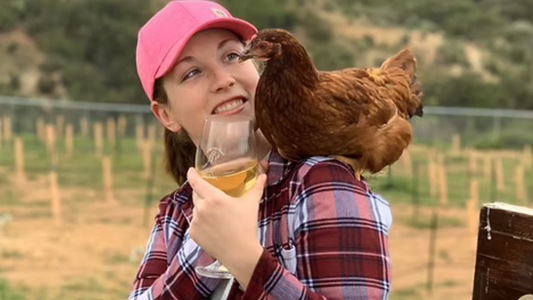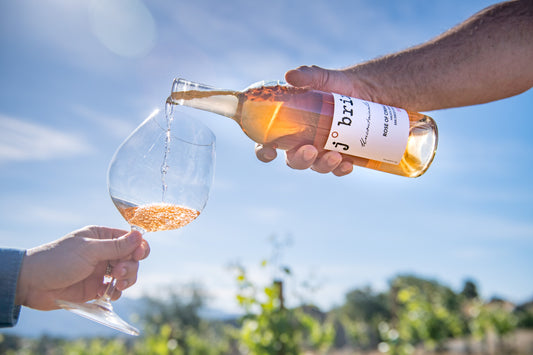We have all been there - you're at a wine tasting with friends and your host is telling you about the tasting notes.
"You'll notice the very obvious taste of leather and tobacco with a hint of spice on the finish." You and your friends all take a taste, nod and sigh, but you are all thinking the same thing...it tastes like wine.
The more wine you drink, the more you'll start to notice that you like one varietal over another, but you may not feel super confident ordering a glass at a restaurant or even more terrifying, describing it to your neighborhood wine shop sommelier. Our goal is not only to introduce you to great wine, but to also help you understand how to talk about the wine's tasting notes so you can start expanding your wine knowledge along the way!

With each bottle of wine purchased, you'll receive an easy-to-read tasting qualities breakdown with the characteristics detailed by the winery themselves. It describes the wine using 4 characteristics - body, sweetness, acidity and tannins. Check out a brief overview below for a better understanding of what each descriptor means. Before you know it, you'll be ordering wine like a pro!
Body - Light v. Bold
The body of the wine describes the weight of the wine on your palate. A common analogy to help contextualize this concept is skim milk v. whole milk. Skim milk feels light and smooth in your mouth, just like a light-bodied wine. Wines typically considered light-bodied would be Pinot Grigio, Sauvignon Blanc and Pinot Noir. Bold wines are more like whole milk or cream and the taste tends to linger in your mouth. Bold wines also tend to have higher alcohol content, so don't let that big glass of red sneak up on you! Wines that are considered bold or full-bodied are Viognier, Cabernet Sauvignon and Syrah. Check out this helpful diagram for reference!
Sweetness - Sweet v. Dry
A wine's sweetness is determined by the residual sugar left over after the fermentation process. When the grapes are fermented, the sugar is turned into alcohol, so sweeter wines are typically lower in ABV. Dry wines won't give your tongue the same tingling sensation as a sweeter wine will, but a dry wine is often mistaken for a wine with high tannins. More on that later!
Acidity - Soft v. Acidic
A wine high in acidity often leads to a feeling of your mouth watering and lips puckering - just like lemonade! Wines described as "crisp" and "citrusy" are often high in acidity and give you that bright, refreshing feeling when you take a sip. Wines described as "rich" or "full" are lower in acidity and are more often associated with full-bodied wines. Often times, acidity is associated exclusively with white wines, but in reality, all wine needs some acidity. It is used as a tool to blend components together and allow each taste and sensation to stand out on it's own. Wines lacking in acidity are considered dull or flat and the absence of the acidity hinders the wine's ability to age in the bottle effectively.
Tannins - Smooth v. Tannic
Tannins are a characteristic of the wine that you feel in your mouth more than you taste. They come from the grape's skin, stem and seeds and can also be added through aging in oak barrels. This is why most red wines have higher tannins than white wines - the red wine grape skins spend more time in the wine during the fermentation process, allowing tannins to absorb into the wine. Tannins give your mouth a dry feeling, but don't forget, dry wines describe the level of sugar and not necessarily the feeling in your mouth. Wines with low tannins are often described as smooth and jammy while wines with high tannins are described as leathery and firm.
Each person's palate and preference is different, so knowing a few basic phrases to describe what you enjoy can go a long way in making your wine tasting experience more enjoyable. Next time you're getting ready to order a glass at a restaurant, ask the staff if they have a wine with a few of your favorite characteristics - you never know what you may discover! Cheers!




